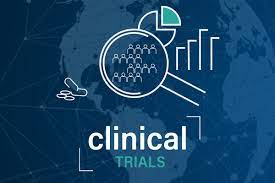Clinical trials are vital to advancing medical knowledge and ensuring safe and effective treatments. While many people may have a general understanding of clinical trials for adults, what about clinical trials specifically designed for pediatric patients?
In this article, we will delve into the fascinating world of pediatric clinical trials and learn how Clinical trials are conducted for pediatric patients.
Before we dive into the minute details, let’s understand why pediatric clinical trials are essential. Children aren’t just small adults; their bodies and health needs differ significantly. For the same reason, medications and treatments that work for adults may not be suitable for children. Pediatric clinical trials aim to address this gap, ensuring children receive age-appropriate care.
What’s the Process of Pediatric Clinical Trials?
#1 – Identifying the Need
Every clinical trial starts with identifying a need. Researchers and healthcare professionals identify medical conditions or diseases requiring new treatments for children. It’s like searching for the missing puzzle pieces to improve children’s health.
#2 – Designing the Trial
Once the need is understood, the trial design comes into play. Researchers and regulatory bodies outline the trial’s structure, including its goals, patient eligibility criteria, and how the treatment will be administered. Designing a pediatric clinical trial is like creating a roadmap for a challenging journey. The roadmap is quite an essential document for a successful clinical trial.
#3 – Patient Selection
Not all pediatric patients are eligible for clinical trials. Specific criteria are used to select patients who meet the trial’s requirements, ensuring they can safely participate. The patients and the participants are found in the region or the entire country during the long search process. This is a long process and may take a few days or months to complete.
#4 – Actual Treatment
Once a child is enrolled in a clinical trial, the treatment begins. It’s essential to ensure the child’s safety and monitor their response to the treatment. The first dose of the medicine or the treatment regime is started, and the entire team of researchers and pediatricians keenly monitor the patients for their safety. The patients are released from the trials if any adverse effects are noticed.
#5 – Data Collection and Analysis
During the trial, a vast amount of data is collected, including the child’s response to treatment, any side effects, and other relevant information. This data is meticulously analyzed to determine the treatment’s safety and effectiveness for children. Nowadays, AI and Big Data are used to collect and analyze the data more effectively than humans.
#6 – Regulatory Approval
Once the trial is completed and the data is analyzed, the results and the raw data are shared with the regulatory authorities in the country. After the second analysis, the authorities approve, allowing the companies to manufacture and sell the medicine or administer the treatment regime to the patients without any restrictions.
Final Words
Pediatric Clinical Trials are very sensitive and take much time to complete. As the patients are the kids, they need to be treated very well, and every step in the trial has to be taken with ultimate precaution. In this post, we tried our best to share every detail about the Clinical Trials for Pediatric patients. If you have doubts, you can ask in the comments below.



